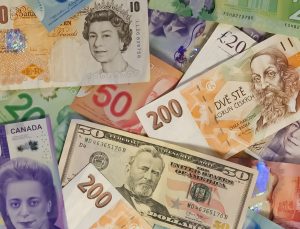In the world of forex trading, understanding the factors that influence the supply and demand of currencies is essential for success. The supply of dollars, in particular, is a crucial variable that can impact the value of the US dollar against other currencies. In this article, we will explore the different scenarios in which the supply of dollars increases in the forex market and how it affects the macroeconomic environment.
Before delving into the various factors that can influence the supply of dollars, it is essential to understand what the term means. In simple terms, the supply of dollars refers to the total amount of US dollars available in the market. It includes both physical currency and digital transactions such as wire transfers, credit card payments, and international trade settlements.
Now, let us take a closer look at some of the factors that can influence the supply of dollars in the forex market:
1. Quantitative Easing (QE)
Quantitative Easing is a monetary policy tool used by central banks to stimulate the economy by injecting liquidity into the market. When the Federal Reserve (Fed) implements QE, it buys government bonds or other securities from banks, thereby increasing their reserves. This, in turn, increases the supply of dollars in the market. The idea behind QE is to encourage lending and investment, which can boost economic growth.
2. Trade Surplus
A trade surplus occurs when a country’s exports exceed its imports. In such a scenario, the country earns more foreign currency than it needs, leading to an increase in the supply of dollars in the market. This surplus can be used to purchase US assets, such as stocks, bonds, and real estate, which can further increase the demand for dollars and strengthen its value.
3. Foreign Direct Investment (FDI)
Foreign Direct Investment refers to the investment made by a foreign company or individual in a US-based business. When there is an increase in FDI, it leads to an inflow of foreign currency into the country, which can increase the supply of dollars. This can be beneficial for the US economy, as it can create jobs, boost productivity, and improve infrastructure.
4. Central Bank Interventions
Central banks can intervene in the forex market by buying or selling their own currency to influence its value. When a central bank sells its own currency, it increases its supply in the market, including the supply of dollars. This can happen when a country wants to weaken its currency to make its exports cheaper and more competitive in the global market.
5. Foreign Aid
Foreign aid refers to the money or resources provided by one country to another as a form of assistance. When a country receives foreign aid in the form of dollars, it can increase the supply of dollars in the market. This can be beneficial for the recipient country as it can help fund development projects and improve the standard of living.
In conclusion, the supply of dollars in the forex market is influenced by a variety of factors, including monetary policy, trade, investment, and foreign aid. Understanding these factors and how they impact the macroeconomic environment can help traders make informed decisions when trading forex. It is important to note that an increase in the supply of dollars does not always lead to a decrease in its value. Other factors such as inflation, interest rates, and global economic conditions can also influence the value of the US dollar against other currencies.





